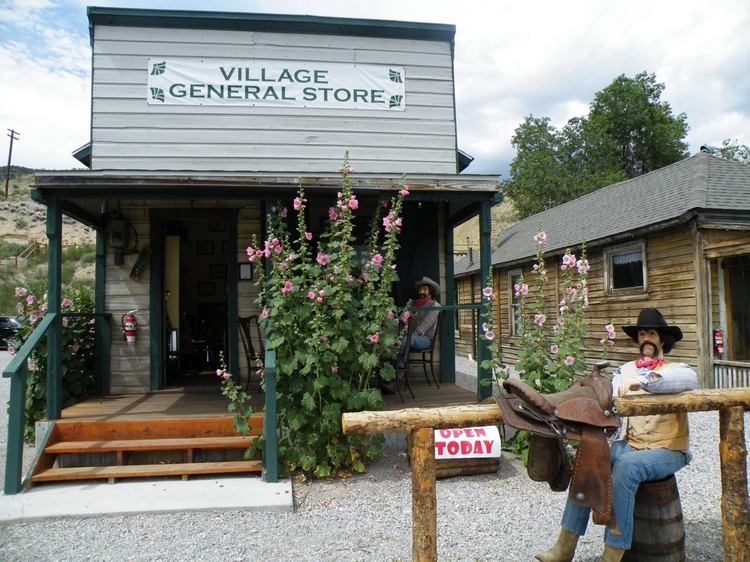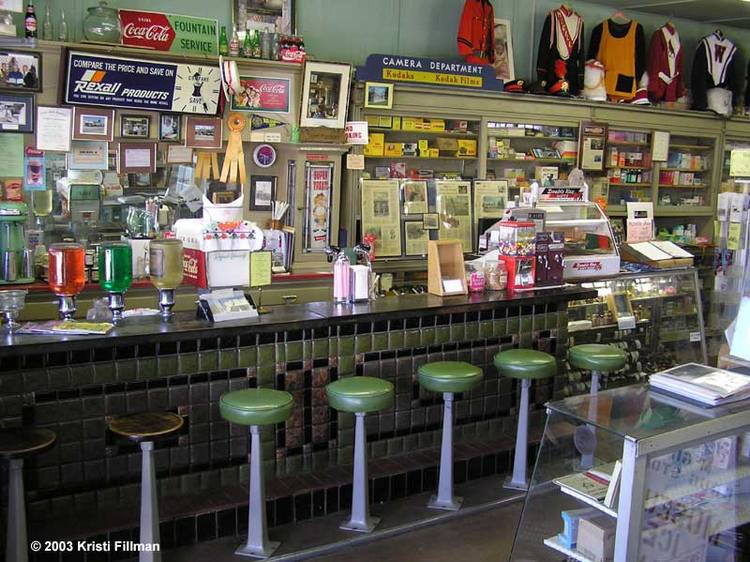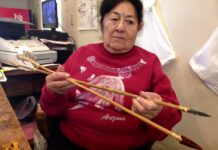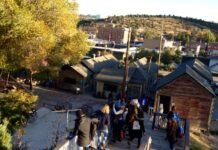Ely and White Pine County: Full of History
During its past, Ely was a mining town. In the 1870s and ’80s, White Pine was part of a boom when British money was invested in the silver mines. After 1900 came the copper boom. In the next 70 years, more than a billion dollars in copper was shipped out of the area. Much of the mining and milling done recently was reworking the waste dumps of the past. Today, copper, gold, and silver are the main minerals mined.
Ranching also played a major part in the history of the area. Cattle and sheep raised here were shipped to the eastern markets. Farming of alfalfa was developed to feed the livestock.
Ely is expanding into industries other than mining. One branch of the state prison system and an honor camp are located here. Expansion of tourist facilities has begun, and several cottage industries have started up.

The Ely Renaissance Society mural project enhances the downtown area and portrays our history. Several murals have been completed by this group, in addition to others that add local color. A sculpture garden and labyrinth add to the outdoor art experience. The Renaissance Village is a restored collection of ethnic houses that represent homes here in the early 1900s. Check the website at elynvarts.com for information. The Village is open Friday and Saturdays mid-May through September, with the Farmers Market in mid August through September. It is located at 400 Ely St. In November, the Village transforms in to the North Pole for the Polar Express Train rides. Information about the murals and the Village can be found at elynvarts.com.
The Ely Art Bank, an art gallery and cultural center, is located in a restored bank building in downtown Ely next to the Garnet Mercantile. Stop in to see Art Among the Aspens and so much more. Art work by nearly 40 artists is on display.
Downtown Ely offers a friendly, small town atmosphere where people can window shop … and stop to admire the outdoor art. Take time to explore the unique shopping, variety of dining experiences and the friendly atmosphere where visitors stop in at a historic soda fountain for delicious treats.
There is much to see and do around White Pine County. Great Basin National Park, Cave Lake and Ward Charcoal Ovens State Parks, and the Mount Moriah Wilderness Area, are nearby. There are excellent hunting and fishing areas. Campgrounds are available. Wilderness activities and licensed guides are also available.
Special events are scheduled throughout the year. Ice fishing is popular in the winter. The Ice Fishing Derby and the Fire and Ice Sculpture show with fireworks are held in January. The Cannons and Cocktails Boat Races are held in June, with fireworks over the lake. These events take place at Cave Lake State Park. Events can be found in this publication or at www.whitepinechamber.com or elynevada.net.
A variety of museums are available for those interested in exploring the past. The White Pine Public Museum, located at 2000 Aultman Street, has a wonderful collection of artifacts from the past, a prehistoric cave bear exhibit and a huge doll collection.

McGill
The Consolidated Copper Company bought water rights to operate the smelter to refine the copper ore mined at Ruth. The smelter would be located where the water was. Therefore, the town of McGill was born. McGill is the home of the McGill Drug Store Museum. The stock and everything used to run the business in the 1970s is still on the shelves, and the soda fountain is operating. Don’t miss this chance to step back in time to a store left just as it was when the last customers left in the early 1970s.

Ruth
Old Ruth was originally the location of Consolidated Copper Company. Eventually the open pit mine began to overtake the town, and the town was moved to where it is now. It became New Ruth, and later just Ruth. After closing in 1999, the mine reopened in 2004 and continues to operate today. A company town in the beginning, Ruth’s houses and buildings were sold by the Kennecott Copper Corporation to individual owners in 1955.
Lund
Lund is one of the settlements of the L.D.S. (Mormon) Church. In 1898, when the church decided to colonize, the Plane ranch became the town of Lund, and the Maddox ranch became the town of Preston. Some of the original adobe buildings are still in use. Many other buildings were moved from the ghost towns of Ward and Taylor. In the dry weather of Nevada, building materials were too scarce to waste.
Lund and Preston were located on the stage line between Hamilton and Pioche. The line ran about where the junction of Hwy 6 and SR 318 is today.
Baker
In 1869, Absalom Lehman homesteaded in the Snake Valley. He decided it would be more profitable to feed the miners than to mine a claim. In 1885, he discovered Lehman Cave. He began what he called “cave crawling” that same year. The next year he began taking visitors through the cave. Almost 800 people visited the cave the first year.
White Pine County and the communities around Ely provide lots of places to explore and history to learn.
— Lorraine Clark














